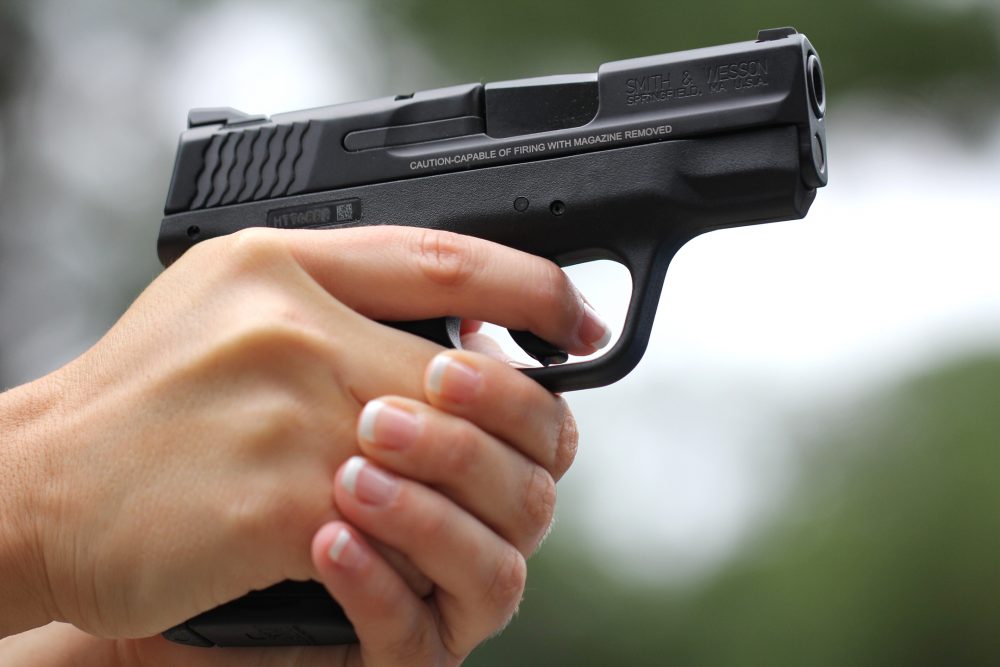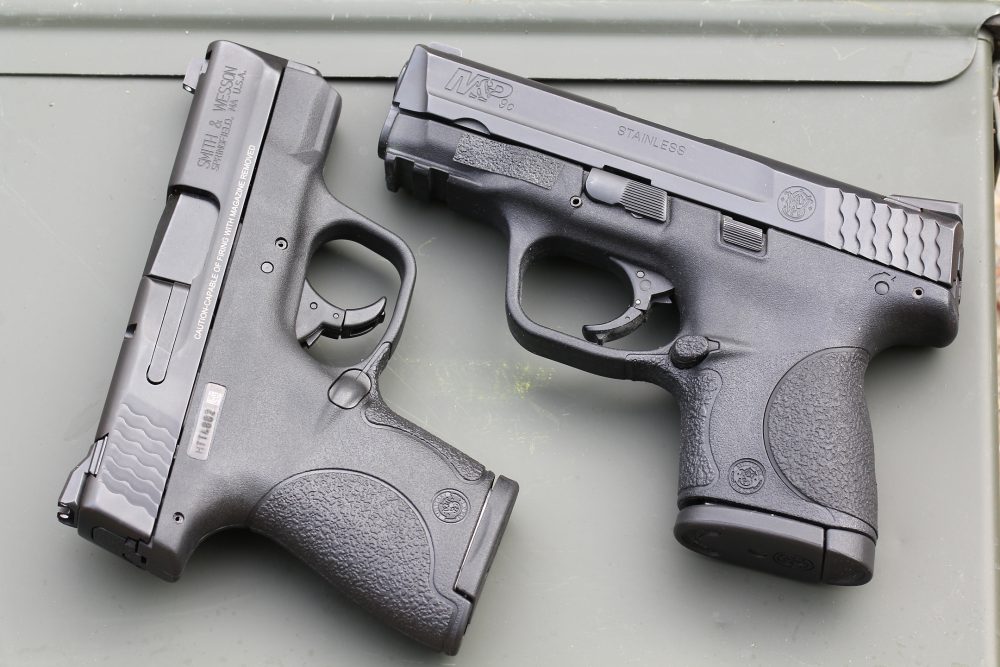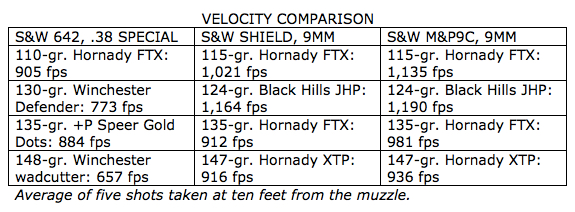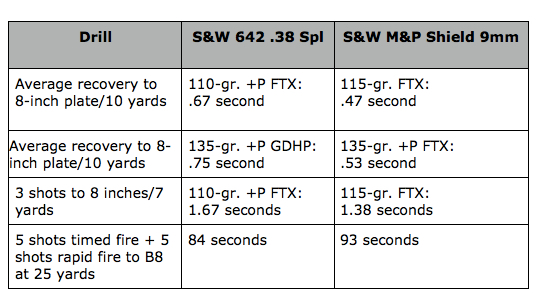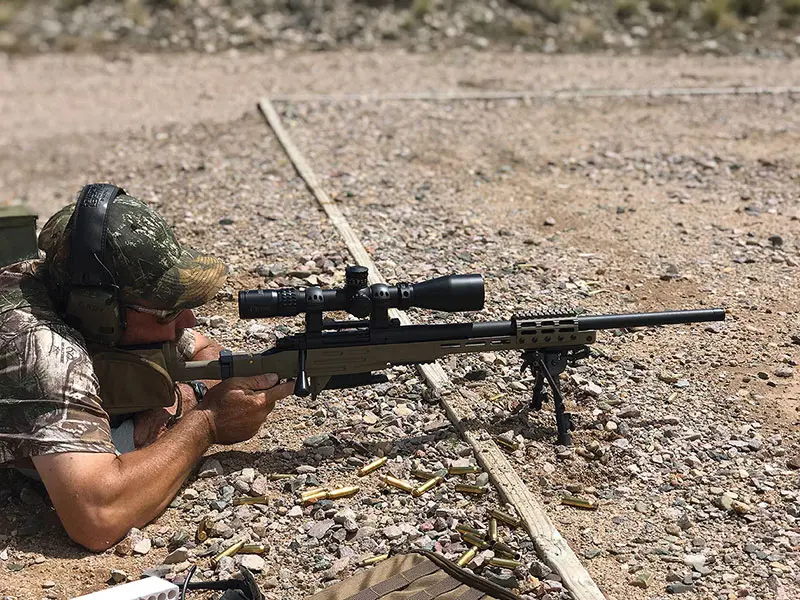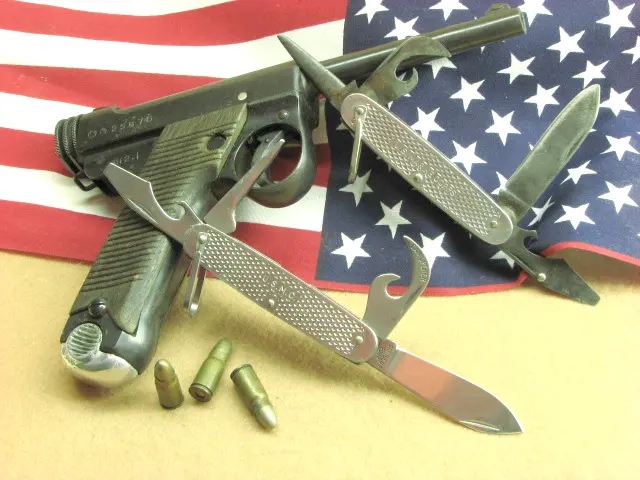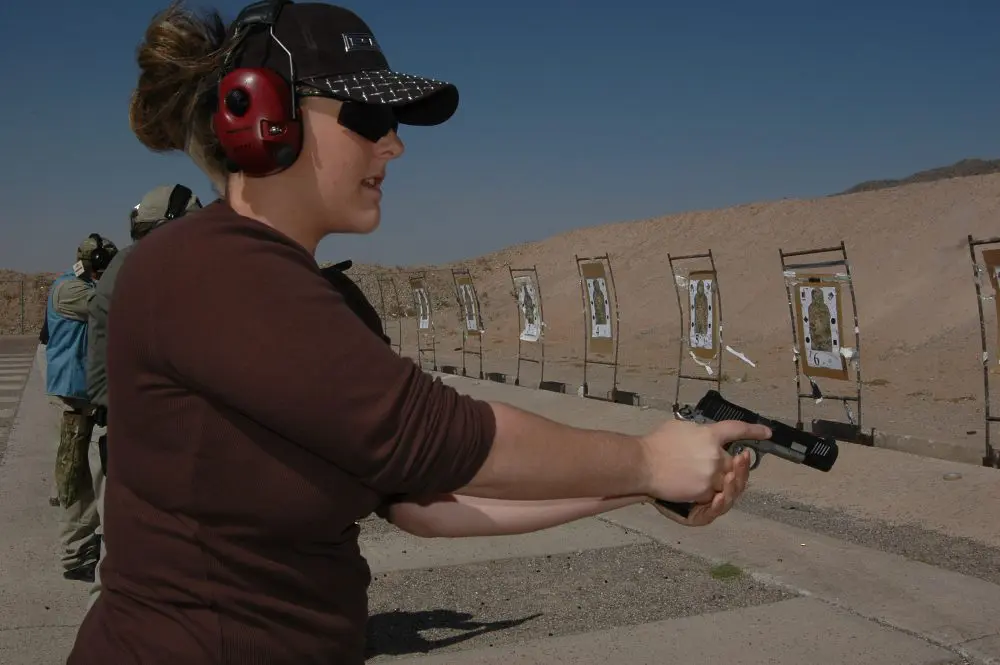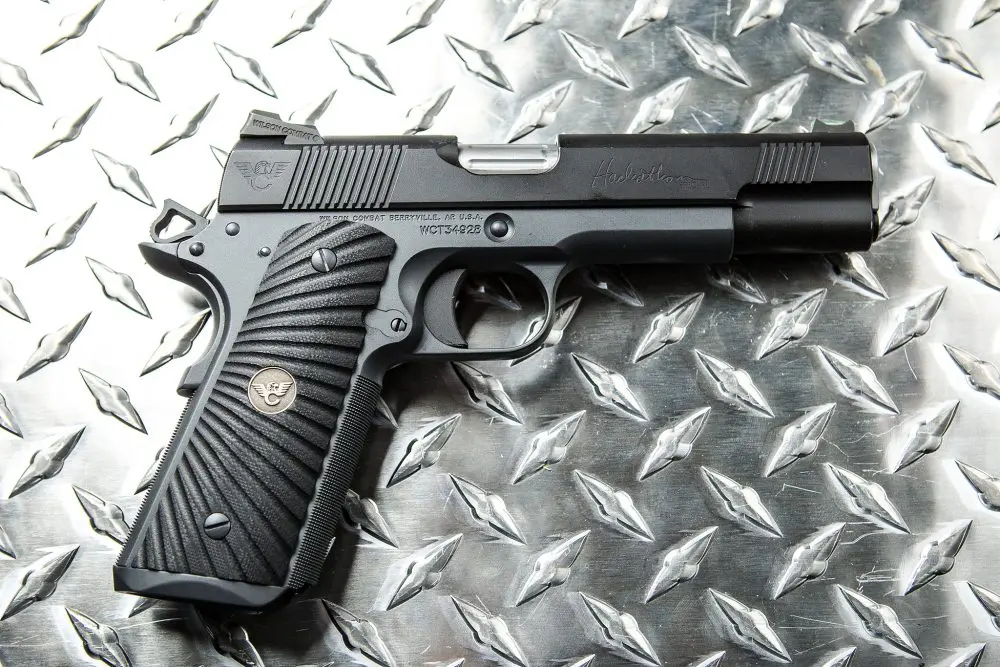Shooters may have noticed that the Smith & Wesson Shield is making serious inroads into the market lately. Since the nationwide explosion in concealed carry began, the .38 Special five-shot revolver—best represented by the S&W 642 Airweight—has been the lead offering from the firm for backup and concealment. The small “J” frame designation is nearly synonymous with the utilization.
In the space of a few short years, the Shield has begun to seriously challenge that. I was slow to warm up to the latest M&P auto, already content with the M&P9C for most of my applications. Recently this changed as I began to see the Shield not as a replacement for the 9c, but more as a direct competitor to the snub. And it started to make a lot of sense.
M&P Shield is exceptionally easy to shoot for its size, as this 25-yard combination of five shots each in 20 and 10 seconds shows.
Table of Contents
BUT I THOUGHT…
Shooters are often surprised to learn that the 9mm packs more energy than the .38 in most compact-appropriate loads. Some have trouble accepting this, the perception that the .38 is more powerful being so firmly implanted. When the .38 S&W Special debuted in 1898, it was met with enthusiasm by regular shooters and law enforcement alike.
The 9mm Luger, on the other hand, was somewhat of a curiosity on these shores until the Smith & Wesson Model 39 and other American pistols began to slowly legitimize it for U.S. shooters in the 1960s. The 9mm was mired in emotional comparisons to the service .45 ACP, and many shooters grew up with the impression that the cartridge is “weak.”
A visual comparison with the fairly large blackpowder-era .38 Special cartridge adds to the illusion. Many shooters hold a mental block that sees the .38 as more effective than the 9mm. Out of the 1 7/8th inches of a J-Frame barrel, the .38 simply loses in direct comparisons with the 9mm out of even the stubby Shield barrel. The accompanying Velocity Comparison chart shows identical bullet weights tilting as much as 150 feet-per-second (fps) faster from the 9mm than the snub nose .38.
This is not to say a .38 isn’t powerful or is a poor choice. It is thoroughly proven, and even the gentle 148-grain target wadcutter is fully capable of stopping a fight if placed properly.
The point of the matter is that in most direct comparisons, the short-barreled Shield is launching more energy at velocities more beneficial to modern bullet performance than the snubbie. The bonus is that, while doing this, it is also significantly easier for many shooters to hit with.
It’s not the size of the dog in the fight, it’s the size of the fight in the dog. Larger .38 Special +P Flextip is actually lighter and 22 fps slower than non +P but higher-pressure 9mm 115-grain Critical Defense load.
HITTING
The J-Frame .38 is almost legendary for its difficulty to shoot well. It can be shot well, but it takes work to acquire the necessary skill. I find that even then it requires regular sustainment to keep a fine edge on that skill—more so than keeping a comparable skill level with the compact auto. For those not willing to put in the time and effort, the snubbie loses effective yardage quickly. As an anecdotal observation, I believe the average shooter gains as much as ten yards of range to solid hits with the compact auto relative to the J.
Coming at the problem warmed up and well prepared, I shot both the .38 and the M&P Shield on one of my favorite accuracy drills. The shooter engages a standard B8 25-yard bull from that distance with five shots from the ready in 20 seconds (timed fire cadence) and then five shots from the ready in ten seconds (rapid fire cadence). The time pressure gives a great sense of what the shooter can produce on demand at two levels of practical cadence.
M&P Shield is at point of overtaking venerable J-Frame Airweight snubbie for many shooters as go-to backup or off-duty gun.
As a baseline, anything over 90 is solid performance from a service handgun. I shot the J with Hornady 110-grain Critical Defense loads, which are both accurate and well regulated to the sights in this revolver. I felt pretty confident in timed fire, dropping only six points with most of the shots in the 5.5-inch bull. The rapid fire was challenging, taking the full ten seconds to cycle the DA trigger and bear down on the tiny sights. I dropped ten points there for a total of 84; a total of eight within the eight-inch “8” ring and two on the 10×10-inch repair center paper. Overall, very satisfactory performance from a snubbie.
Next I loaded the shorter magazine for the Shield with the 115-grain Hornady loads. This was my first run with the pistol on this drill. The timed fire group went into a well-centered 2.2-inch group all in the black and all right on call. The rapid fire tore three more holes in the ten ring and slipped two out of the bull for a total of 93.
Eight of ten in a baseball-sized group in the black would be good performance from any pistol from 25 yards, but as a first attempt from a pocket class 9mm? I was pleased. The pistol can clearly shoot, but I was more impressed with how easy it was to shoot. The Shield gave up very little, if anything measurable, in practical accuracy to its M&P9C cousin.
Shooter can choose two-fingered grip and eight rounds or full firing grasp and nine rounds. Extended magazine gives superior hold to what is available on M&P9C.
ZING
Outside of practical accuracy, the next matter is the relative recoil of the backups. I’ve discussed J-Frame recoil previously (TAMING THE SHREW: Coping With J-Frame Recoil, November 2014 S.W.A.T. ) and how it can affect follow-up shots. The unpleasant smacking the palm and web of the thumb take from Airweight recoil is a poor match to the most effective .38 loads and scare away many a shooter from meaningful practice.
For a measurable comparison, I shot the M&P Shield on the same ten-yard rack of eight-inch steel plates I had used to measure recovery with the J-Frame. Recoil translates into additional time to recover the handgun onto the next vital-sized steel plate at a distance that demands deliberate aim.
The 642 tumbled plates at .67-second intervals with the 110-grain Hornady +Ps. Stepping up to the 135-grain +P Gold Dots brought average recovery to the next shot to three quarters of a second, along with distinctly more “thump” into the hand.
The M&P Shield topped off with 115-grain Hornadys cleared the rack with .47-second plate-to-plate splits. Recoil impulse was quick but without any excessive “flip” and not at all unpleasant. I believe any adult without injury could fire the Shield with this standard-pressure load with little fanfare.
The 9mm 135-grain +P added only .06 second to recovery, averaging .53 second. I had expected a more significant difference between the two loads, but the little auto handles recoil very well, particularly with the extended magazine in place. Recapping, this puts a much faster 135-grain slug downrange at a .22-second advantage to the snubnose.
Shield’s timed runs on steel plates averaged almost a quarter second per shot faster to recover than .38 J-Frame.
I’m somewhat of a J-Frame fan, so perhaps more telling than my results was watching other shooters. Shooters who struggled to hit plates at all with the Airweight .38 were reliably ringing steel with the Shield at an acceptable cadence.
For those more concerned with a single-target, multiple-shot scenario, both handguns were timed against an eight-inch circle at the traditional seven yards for three shots from the ready. The Airweight averaged 1.67 seconds with the 110-grain loads. But as I pushed the speed, I dropped the third shot just out of the circle more often than not. Slowing to anchor, all three tick-tocked at about 1.85 seconds.
The Shield was extremely controllable at speed, averaging 1.38 seconds to solid hits. This reflected two poor runs where the little pistol just didn’t press out as smoothly into center or track as well, and these “bad runs” were about equal to my “best” on the J-Frame. The most common result with the Shield registered 1.17 seconds.
The Shield is surprisingly easy to run hard, especially with standard-pressure loads. The difference in performance between the subcompact Shield and a full-size service pistol is not as significant as the difference in size would suggest.
Looking at the Airweight (top) and M&P9C shows how remarkably thin the Shield is.
MATH
With the most important aspect, performance, out of the way, math is instructive. The J-Frame holds five shots, the Shield eight or nine total depending on magazine. The Shield weighs in at 19 ounces empty, similar to a classic all-steel snubnose like the Model 36, where the Airweight rides empty at 15 ounces.
Many people pocket carry or wear a Shield in an ankle holster with no concern. But just as many are uncomfortable at that weight and will be happier at the 15-ounce level in these carry modes. It is a personal trial-and-error situation.
Where the Shield truly shines is in thinness—a scant .95-inch across. Looking at it side by side with an M&P9C and a J-Frame really gives an appreciation for how slim that is. This feature really sets it apart for inside-the-waistband carry, where its light weight and thinness allow it to ride comfortably and disappear with a good holster. The same can be said of nearly any pistol with the right gunbelt and holster, but the Shield is exceptionally forgiving in this area.
I carry the M&P9C quite a bit and have no trouble concealing it, but with some clothing combinations, its thickness causes it to print slightly. In these situations, the Shield disappears. The Shield is very forgiving for first-time concealed-carry users who haven’t yet mastered all the subtleties that allow for effective concealment.
In the past, many shooters stepped down to a J-Frame for off-duty or concealed use with some reservations about its capacity and their ability to run it well when they couldn’t dress around a larger handgun. The Shield answers this niche well, concealing as well or better than the snub on the beltline.
M&P Shield strikes a wide appeal as a comfortable pistol for those with small hands. It’s small enough to conceal and not be intimidating to casual shooters, but large enough to shoot well as a serious backup.
DOWNSIDE
To this point, it may sound as if the Shield has it all over the J-Frame and maybe even its M&P9C stablemates. But there is one area I do have some concern with: manipulation of the weapon. When Smith & Wesson got the Shield to its impressive thinness and compact overall size, there were sacrifices, specifically the depth of the grasping grooves in the slide and the strength of the recoil spring. It is significantly more difficult to cycle the slide on the Shield than on an M&P9C or full-size pistol. In fact, I find it takes attentive effort to cycle and is downright difficult to lock the slide back.
This has implications for the less experienced buyer, particularly if they carry or store it with a filled magazine inserted and chamber empty. For most users, this is an occasional hindrance that just requires attention and effort while at the range or loading the pistol for carry or ready access.
I genuinely wonder how effectively the average person with lower percentile hand strength can manipulate the little pistol. In this respect, there is no strength required to unlatch the cylinder on the 642 and poke .38s into the chambers to prepare it for action.
Shield and its M&P9C cousin.
APPEAL
The Shield seems to have a universal appeal as an unobtrusive defensive weapon that we haven’t really seen in generations—the non-intimidating yet easy-to-shoot concealed/backup/sock-drawer gun. The last massively popular example that jumps out is the Colt pocket hammerless .32. The J-Frame has always had a dedicated following, but how many of the beginners who buy one shoot more than a cylinder or two before deciding it’s best left in the closet loaded for emergencies and not shot?
Likewise, I’ve seen many people hesitate to purchase a service handgun, put off somehow by its size and “footprint,” despite its being ideal for their stated needs. I’ve noticed quite a few of these shooters eagerly embrace the Shield. It seems to have found the sweet spot in size, where it is pleasant to shoot, easy to conceal, and gives an adequate grasp, but is small enough to slip into a glovebox, drawer, or other. There’s a magic in that combination that’s not immediately apparent to the hardcore shooter.
One shooter I know has examples of a wide range of effective fighting handguns in the safe. His house gun? A Shield. He recently answered a call from a neighbor whose alarm was going off. He didn’t grab the 1911 or the high-capacity 9mm. He slipped the Shield into his back pocket and did a walk-around of the house in question.
This is a unique attribute of the subcompact Shield. Many people naturally resist answering an unexpected sound outside or knock at the door with a six-inch .357, even if something doesn’t seem right. They seem comfortable with the Shield.
On the other end of the spectrum, I’ve noticed quite a few high-end experienced and talented associates migrating to the Shield, some up from a J-Frame and others down from the M&P compacts or larger pistols. The ease of concealment, combined with decent capacity and excellent shooting characteristics, has a powerful allure.
The Shield seems poised to be the J-Frame for this generation.
SOURCES
SMITH & WESSON
(800) 331-0852
www.smith-wesson.com
BLACK HILLS AMMUNITION
(605) 348-5150
www.black-hills.com
HORNADY MFG. CO.
(800) 338-3220
www.hornady.com







